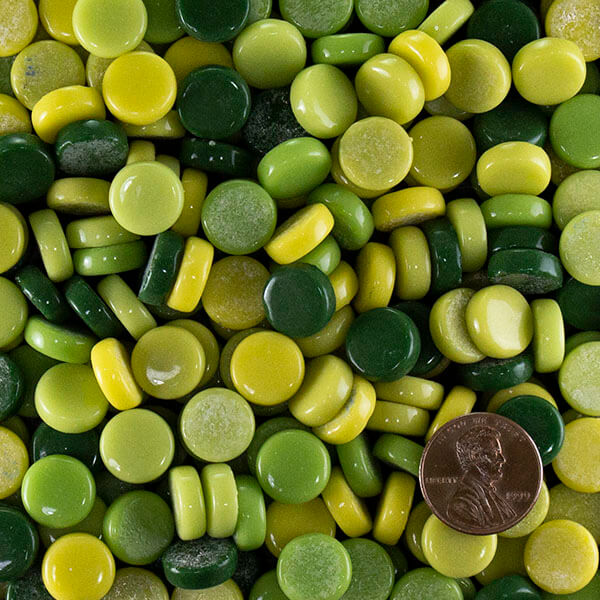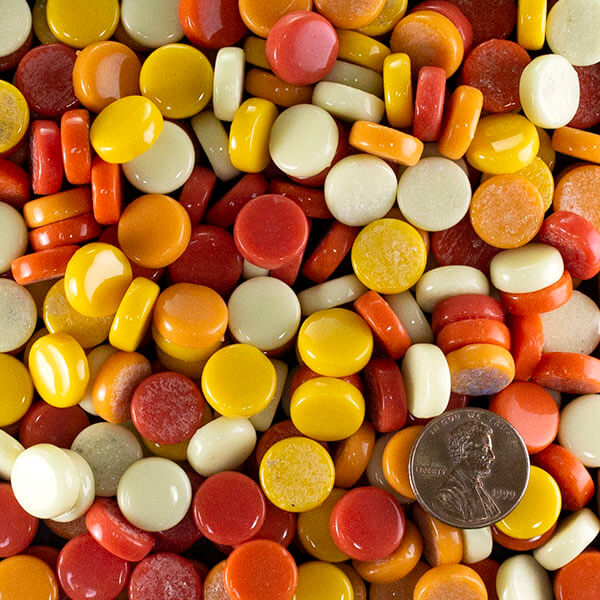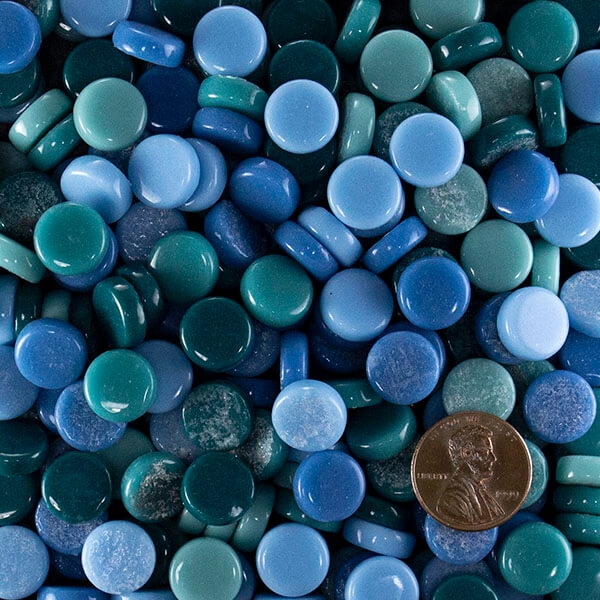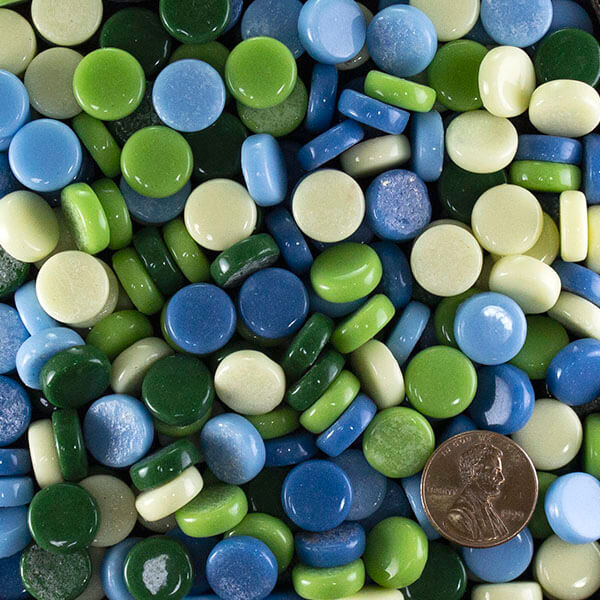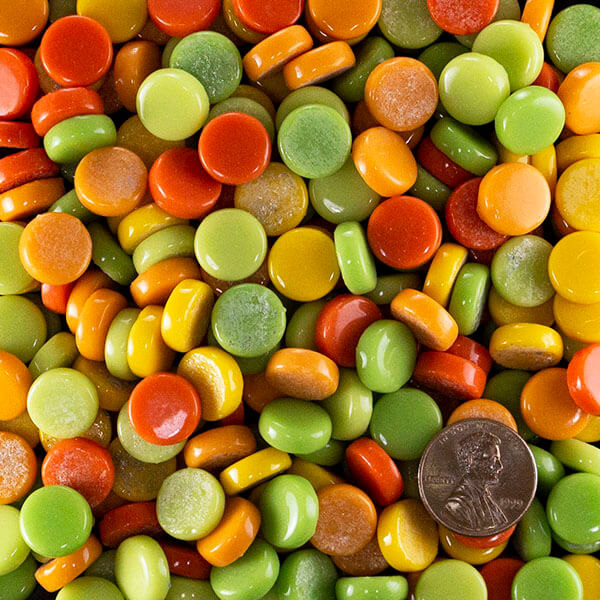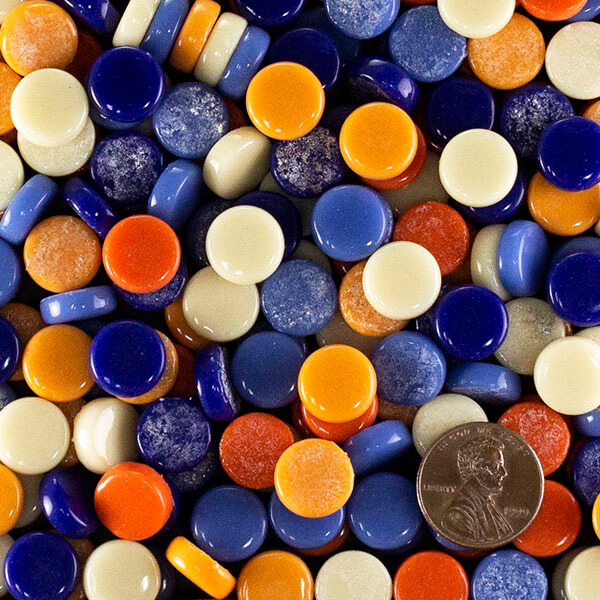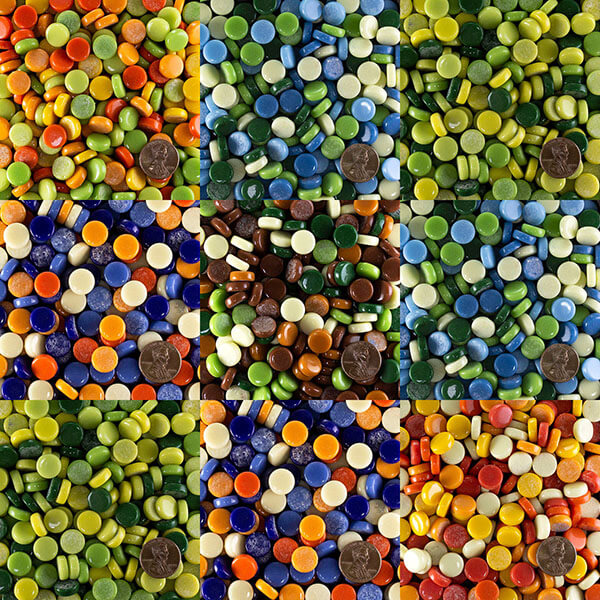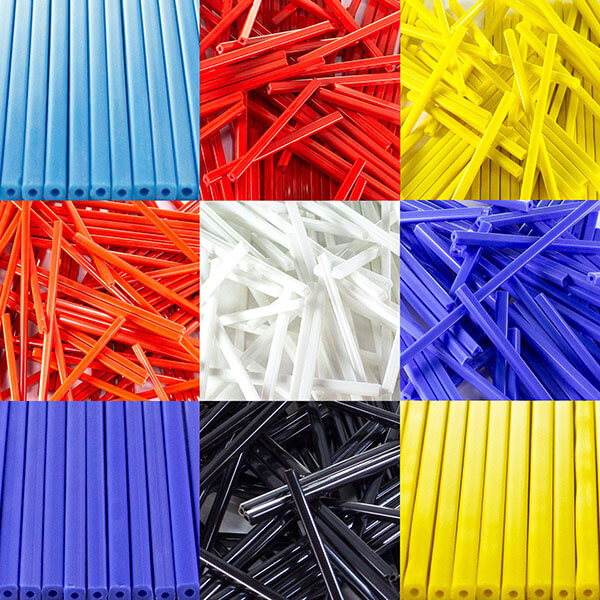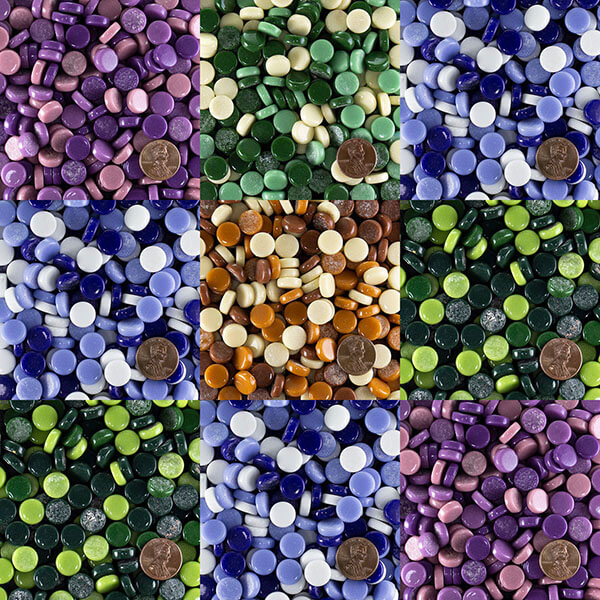
Thinny-Penny U-Mix 3-Color Penny Round Assortment is a bundle of 3 separate penny tile colors (1/2-lb each) that you mix yourself to create a 1.5-lb assortment. The numbers in the assortment name indicate each color in the bundle.
Each 1/2-pound bag contains about 230+ pieces and covers about 1/3 of a square foot with a standard grout gap of 1/16 inch. That means the complete 1.5-lb assortment bundle should contain about 690+ pieces and cover about 1 square foot.
MORJO™ Thinny-Pennies™ Penny Round Recycled Glass Tiles have a glossy finish, and solid opaque color throughout (not just on the tops or bottoms). Unlike glass gems, another common round tile, Thinny-Pennies™ have a flat and even surface rather than puffed. This makes them much easier to use with other types of glass tile and easier to grout.
Recycled glass is a homogenous material made by fusing powdered glass. It has solid and consistent color all the way through and cuts cleanly and predictably using the Wheel-bladed Mosaic Glass Cutter. Hard, durable, and UV-resistant, it makes great material for commercial exteriors and murals.
Rough Bottoms for Improved Bonding
The bottoms of these tiles are left intentionally rough and chalky from manufacturing for better bonding strength. Rough, scratched, or etched glass surfaces bond more effectively than embossed ridges. Also, while embossed ridges can interfere with cutting, rough bottoms allow smooth controlled cutting.
U-Mix 3-Color Penny Round Assortment 2.5-lb
- glass penny round tile bundle
- tile size: ~1/2 inch (12mm) diameter
- thickness: 1/8 nominal (4mm)
- sales unit: (3) 1/2-lb bags of individual colors
- yield: 1.5-lb assortment of approximately 690+ tiles
- material: glass
- variety: recycled glass
- shape: circle, penny, flat round
- pigments: colorfast, UV resistant
- durability: frost-proof, impervious to liquid
- usage: suitable for indoor and outdoor use
Coverage
Each sales unit of 1.5 pounds covers about 1 square foot assuming a standard grout gap of 1/16 inch. Hard, durable, and UV-resistant, it makes great material for commercial exteriors and murals.
Grout Gap?
Note that dry indoor mosaics do not require grouting, and so for those you can simply mount the tiles tightly together. On the other hand, wet and outdoor mosaics must have grout to prevent water from penetrating behind the tiles. For those, leaving a 1/16-inch gap allows enough grout to adhere between the tiles.
Compatibility
Like most of the glass tile we sell, flat penny rounds have a nominal industry-standard thickness of 1/8 inch (4mm). You can use these with other brands of recycled glass and even vitreous glass tile.
Cutting Recycled Glass Thinny-Pennies™
Recycled glass cuts like butter using the Mosaic Glass Cutters without creating a lot slivers or cutting waste.

